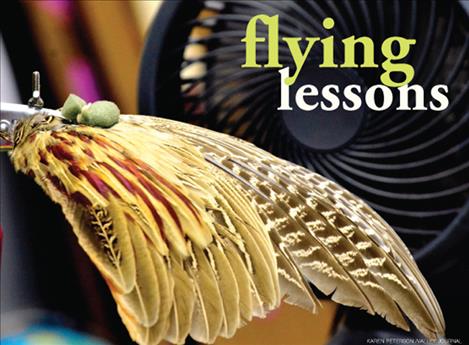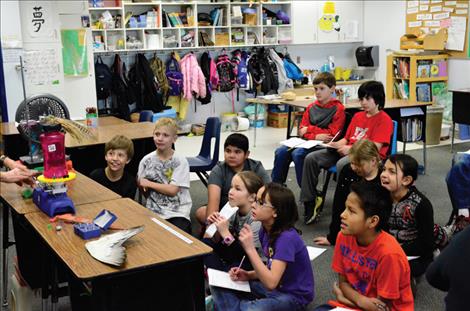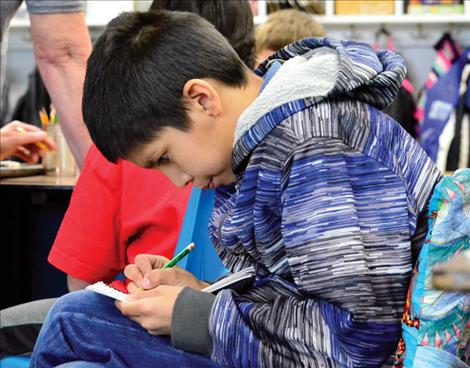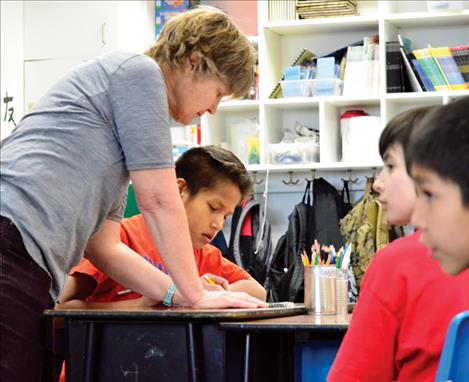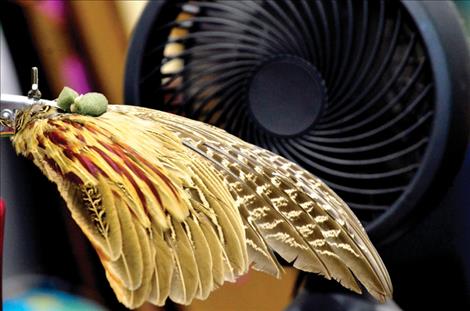Young scientists consider flight
Hey savvy news reader! Thanks for choosing local.
You are now reading
1 of 3 free articles.
How do birds fly? Fourth-grade students at Pablo Elementary School wanted to find out the answer to that question proposed by a naturalist from the Montana Natural History Center on Thursday.
“The center made it their mission to make sure kids in Montana had exposure to natural history,” said Pablo Elementary Teacher Carolyn Pardini.
Naturalists from the center travel to the school and other schools across Montana once a month to work with students to answer scientific questions based on the form and function of things in nature.
Tribal Wildlife Biologist Steph Gillin was on hand to help out with the class. She often leads seminars on nature and wildlife. She is also on the Pablo Indian Education Committee that helped provide funding for the naturalist to visit.
“The easiest way to get kids into science is to do a lot with the natural world,” Gillin said.
Naturalist Christine Wren from the center pulled out two real bird wings from their storage bags during the science experiment and moved them as if she were a bird, with approving giggles from the students. She asked the students to consider how birds fly using their wings, and why didn’t she fly when she flapped the wings?
To answer those questions, the students considered the body structures of birds and humans. It was decided that humans are way too heavy to fly. Birds don’t even have teeth to help reduce their total mass.
“They eat tiny rocks and all the rocks mash up their food,” Jena Leigh, 9, explained to the class about how birds grind up their food.
The way the wind moves over the outstretched curve of the wings was the next topic of discussion. The students got up and demonstrated the relationship between the wind and the wings with direction from the naturalist.
“The wind needs to go over and under the wings and meet at the same time,” Wren said, explaining that the effect creates lift. “The key thing is the curve of the wings.”
With that knowledge, the scientific experiment began. Each set of wings was separately attached to a scale, weights were added, and the fan was turned on to simulate air. Students watched closely to see which wing — grouse or duck — would have the most lift during flight.
“It was awesome,” said Ethan Chee, 11. “The duck has more wing power.”
Naturalist Wren explained it’s the shape of the wings that makes all the difference. A duck has long narrow wings that allow it to fly for long periods of time during migration, and the residential grouse, which doesn’t do much flying, has a more rounded shape to their wings.
The students opened their journals and recorded the question, considered their hypothesis and outlined the results.
“We are growing good stewards whether they become wildlife biologists or not,” Pardini said of her students.
Biologist Gillin added that students were also learning about nature and “how to respect it.”
Pardini received a $500 grant from the Montana Environmental Association to continue the program at the Pablo Elementary School for both fourth-grade classes next year.
“I’m so grateful to the Indian Education Committee for helping with this,” she said. “I don’t think we would have gotten this grant without them getting this started.”
The fourth graders will continue their scientific research for the rest of the school year. They are planning a field trip to study insects at Council Grove State Park.
“We are also going to talk about the Hellgate Treaty,” Pardini said. “I think you need to talk about the treaty if you are going where it was signed.”















